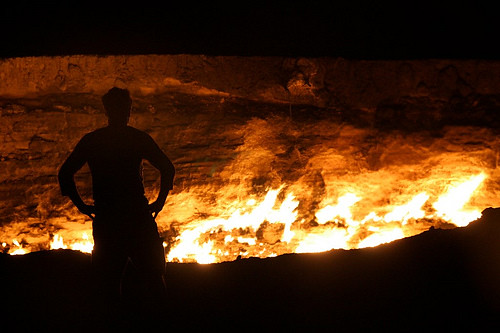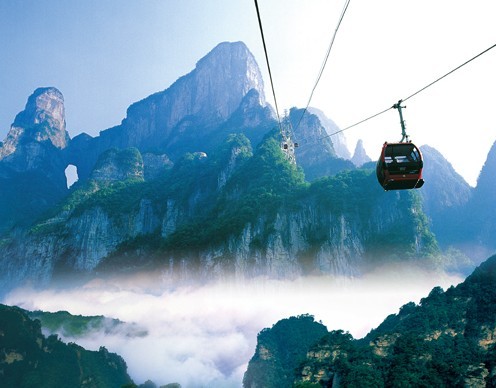From the Gates of Hell in
Turkmenistan to Wulingyuan National Park in China, here are little-known
natural wonders
Take a
look at ten lesser known natural wonders around the world. From mesmerizing
craters ablaze for the past 40 years to an entire forest made of limestone
needles in Madagascar which is so dense that’s its virtually impenetrable.


In tenth place is ‘The Gates of Hell' in
Turkmenistan, which is a crater that has been ablaze non-stop for around 40
years, caused when natural gas was set on fire.

SouthwesternSlot Canyons in the United States
In ninth place is Southwestern Slot Canyons in the United States. Narrow fissures carved into rock by millennia of wind and water erosion. The longest, Buckskin Gulch stretches for 12 miles.

In ninth place is Southwestern Slot Canyons in the United States. Narrow fissures carved into rock by millennia of wind and water erosion. The longest, Buckskin Gulch stretches for 12 miles.
Tsingy ofBemaraha in Madagascar
In eighth place is Tsingy of Bemaraha in Madagascar. A forest made of limestone needles. It's so dense that it's virtually impenetrable to humans.
In eighth place is Tsingy of Bemaraha in Madagascar. A forest made of limestone needles. It's so dense that it's virtually impenetrable to humans.

In seventh place is the Belize Barrier Reef which
is the largest barrier reef in the Western hemisphere. 90 per cent of its
species remain undiscovered.


In sixth place is the Grand Prismatic Spring. It
is the third largest spring in the world and its remarkable colors are produced
by algae and bacteria.


WulingyuanNational Park in China
In number five is Wulingyuan National Park in China. Home to over 3,000 gigantic sandstone columns, many over 200m high. This park used to be an ancient tropical sea floor.

In number five is Wulingyuan National Park in China. Home to over 3,000 gigantic sandstone columns, many over 200m high. This park used to be an ancient tropical sea floor.

Namib Desertin Namibia
Fourth is the Namib Desert in Namibia. It's thought to be the oldest desert in the world and is home to huge sand dunes, some measuring 380m high.
Fourth is the Namib Desert in Namibia. It's thought to be the oldest desert in the world and is home to huge sand dunes, some measuring 380m high.
In third place is Salar De Uyuni in Bolivia, which
is the world's largest salt flat, which measures 4,000 square miles.

RichatStructure in Mauritania
In second place is Richat Structure in Mauritania. A mysterious 50km-wide geological feature in the Sahara Desert and is believed to be caused by uplift and erosion rather than a meteor.
In second place is Richat Structure in Mauritania. A mysterious 50km-wide geological feature in the Sahara Desert and is believed to be caused by uplift and erosion rather than a meteor.

At number one is Socotra Archipelago in Yemen. An
extremely isolated landform, around 33 per cent of its plant life is found
nowhere else on earth.
For Get your Favourite Destination : CLICK here




